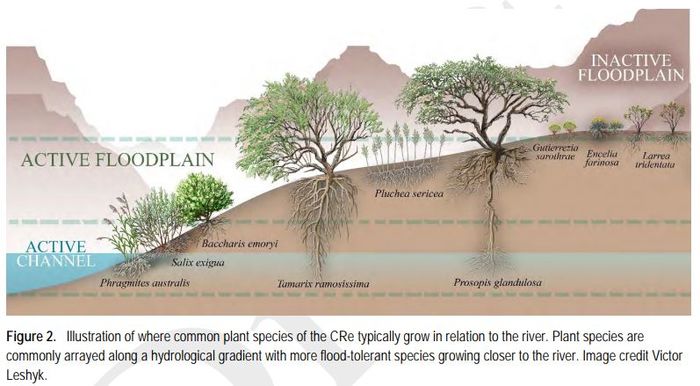Difference between revisions of "Riparian Vegetation"
Cellsworth (Talk | contribs) |
Cellsworth (Talk | contribs) |
||
| Line 100: | Line 100: | ||
'''2023''' | '''2023''' | ||
| + | *[https://www.usbr.gov/uc/progact/amp/amwg/2023-02-16-amwg-meeting/20230216-ScienceUpdateLakePowellRiparianVegetationBugFlows-508-UCRO.pdf Science Update: Lake Powell, Riparian Vegetation, and Bug Flows] | ||
*[https://doi.org/10.3133/ofr20231026 Palmquist et al., 2023, Assessment of riparian vegetation patterns and change downstream from Glen Canyon Dam from 2014 to 2019: U.S. Geological Survey Open-File Report ] | *[https://doi.org/10.3133/ofr20231026 Palmquist et al., 2023, Assessment of riparian vegetation patterns and change downstream from Glen Canyon Dam from 2014 to 2019: U.S. Geological Survey Open-File Report ] | ||
*[https://www.usbr.gov/uc/progact/amp/twg/2023-01-26-twg-meeting/20230126-AnnualReportingMeeting-PredictiveVegetationModeling-508-UCRO.pdf Predictive Vegetation Modeling: Progress and Opportunities for Growth] | *[https://www.usbr.gov/uc/progact/amp/twg/2023-01-26-twg-meeting/20230126-AnnualReportingMeeting-PredictiveVegetationModeling-508-UCRO.pdf Predictive Vegetation Modeling: Progress and Opportunities for Growth] | ||
Revision as of 18:10, 30 October 2023
|
|
LTEMP Resource Goal for Riparian VegetationMaintain native vegetation and wildlife habitat, in various stages of maturity, such that they are diverse, healthy, productive, self-sustaining, and ecologically appropriate. Desired Future Condition for Native Species and Biotic CommunitiesNonfish Biotic Communities: CRE Riparian Domain: |
| --- |
--- |
--- |
|---|




